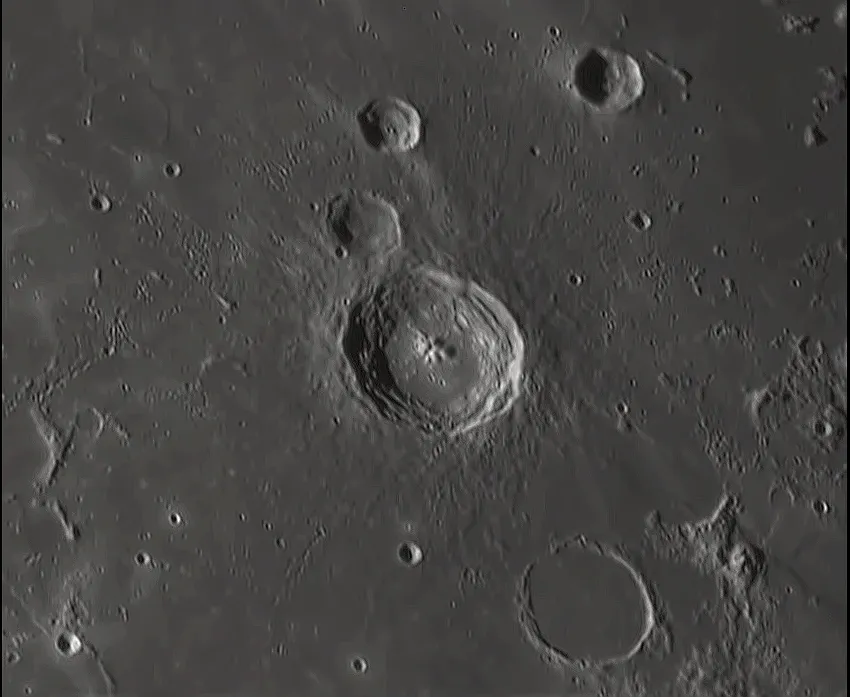Lubiniezky is a 45km ring filled with lava from Mare Nubium, a fine example of what’s known as a ghost crater.
There are a vast number of craters visible on the Earth-facing side of the Moon and, indeed, on the far side we can’t see.
More on the Moon

Classic craters have well-defined sharp rims surrounded by ejecta ramparts.
Internally, they exhibit complex terraces leading to a flattish floor with a mountain complex in the centre.
Crater Lubiniezky isn't like this at all.
Key facts

- Size: 45km
- Longitude/latitude: 23.9° W, 17.9° S
- Age: Around 3.9 billion years
- Best time to see: Two days after first quarter or one day after last quarter.
- Minimum equipment: 50mm telescope
For an example of the more ‘classic’ kind of crater, look just to the south of Lubiniezky, where the 61km-wide Bullialdus sits. It absolutely fits the description.
Fortunately, the position of both craters means that they’re close to either the morning or the evening terminator at around the same time.
This gives a fantastic opportunity to study, compare and contrast both features under oblique lighting conditions.

What Lubiniezky looks like
For its age – in the region of 3.9 billion years old – Lubiniezky is in remarkably good shape (apart from its insides being completely flooded with lava).
It has beautifully curving rim walls largely uninterrupted by any serious impacts.
There are a couple of minor exceptions, of course.
One is in the northern section, where the ring is interrupted by a 2.1km craterlet and a small, similarly sized gap in the south, where the flat floor joins the external lava surface of Mare Nubium.

The rim wall rises sharply above the crater’s floor for most of the circumference, those areas away from the ‘gap’ formed by a steep cliff edge, approximately 400 metres high.
Lubiniezky’s beautifully flat floor is impressive, but at close inspection through large instruments or high-resolution imaging setups, when the terminator is nearby it has a definite mottled appearance.
Apart from a smattering of tiny craterlets, there are a number of 2km sunken craterlets, features which themselves have been completely submerged beneath a layer of lava.
At times of oblique illumination, the faint outline of these features may be glimpsed – like ghosts within a ghost.

Observing
There are several other ghost craters in the region, but Lubiniezky is the best-looking of the bunch.
Just to the northwest is the 28km plectrum-shaped form of Lubiniezky A, another flooded crater with a much rougher rim.
Immediately to the west of Lubiniezky A is 37km Lubiniezky E, another ghost.
This one has a better-defined outline than Lubiniezky A, but is still rather rough and more broken than Lubiniezky.
Visible at a similar phase time to Lubiniezky is the similarly sized crater Kies. Lying 256km to the south, lies has a south-pointing extension that makes it resemble a hand mirror.
Immediately west of Kies is a famous dome called Kies Pi.
Like other domes on the lunar surface, it’s best seen when the terminator is nearby, as the oblique lighting highlights the appearance of the 145m-high and 13km-diameter lunar dome.
If you have any images of Lubiniezky, we'd love to see them! Send them to us by emailing contactus@skyatnightmagazine.com.
This guide appeared in the September 2025 issue of BBC Sky at Night Magazine

